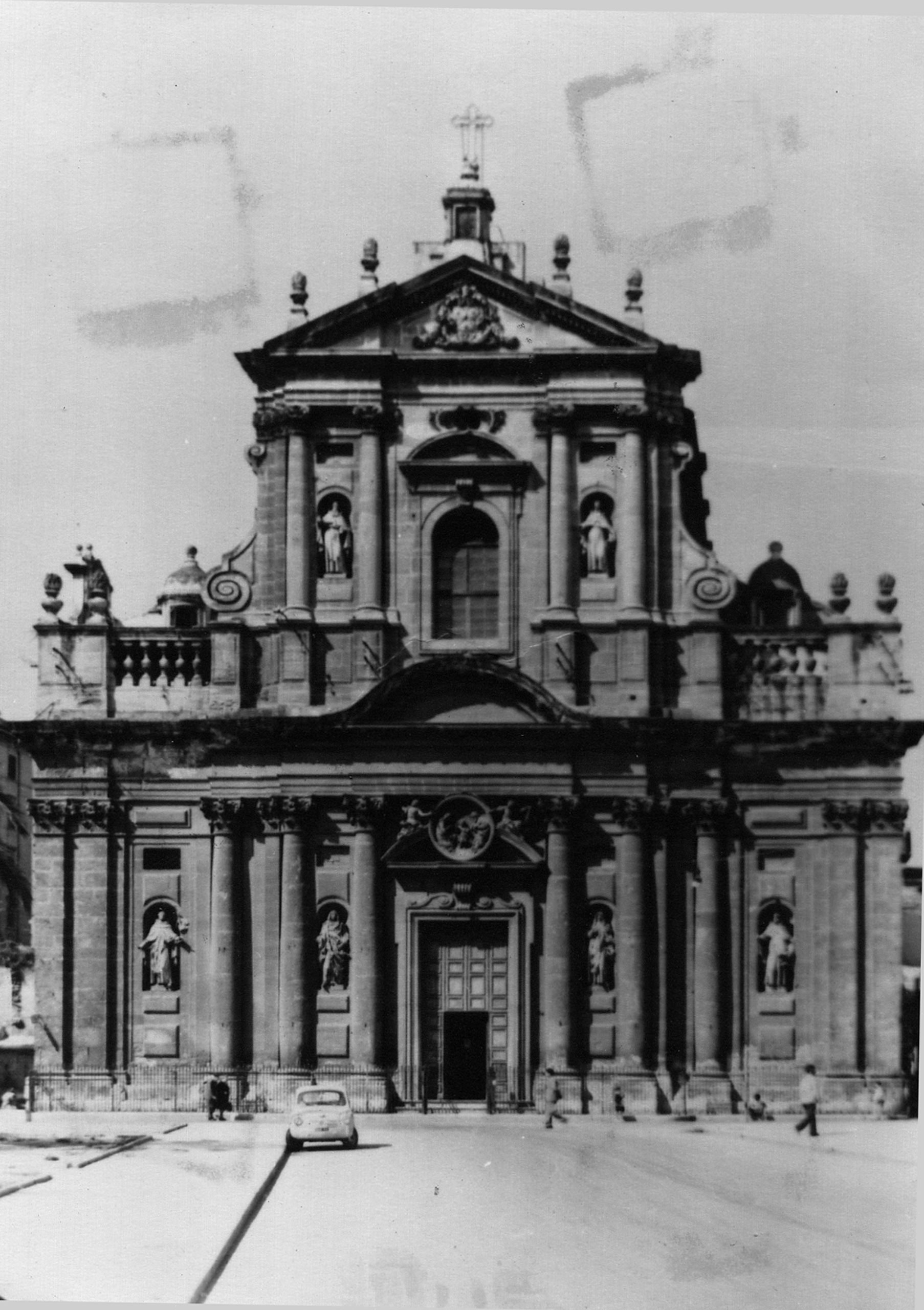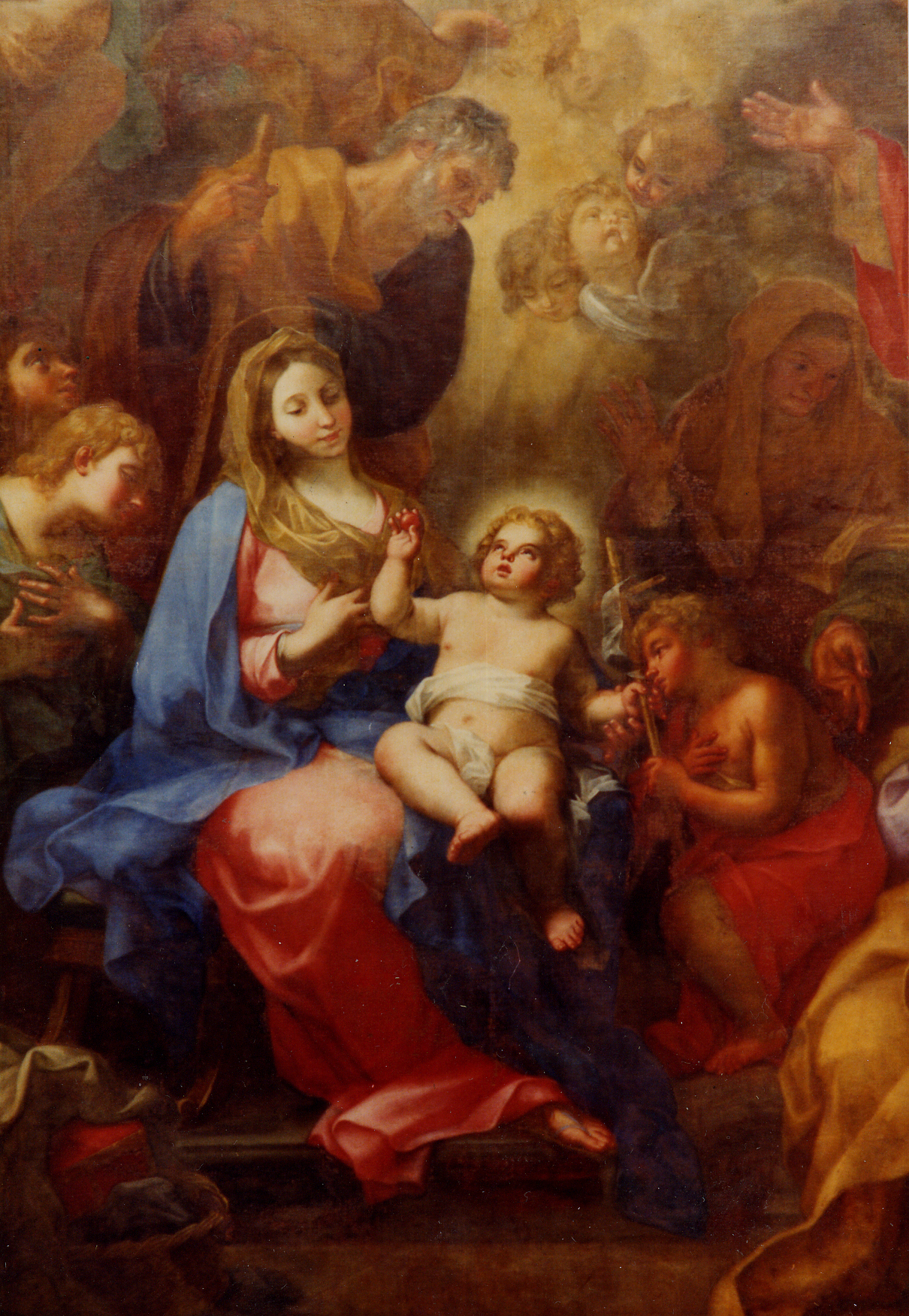
Read English version

La chiesa di Santa Teresa alla Kalsa con la sua meravigliosa mole campeggia Piazza Kalsa. La grandiosa facciata della chiesa opera del Crocifero Fra’ Giacomo Amato, uno dei più grandi architetti della Sicilia del XVII sec., è una delle più alte espressioni del barocco palermitano. La chiesa edificata dall’Amato tra il 1686 e il 1706 è stata voluta dalle suore carmelitane del tempo per sostituire la prima e più angusta cappella del monastero stesso omonimo. L’interno, che si presenta con un’unica navata e con 4 altari laterali ornato da stucchi decorativi attribuiti alla famiglia Serpotta, è stato voluto, progettato e disegnato nei minimi particolari dal frate architetto su precise indicazioni e desideri delle monache. L’altare maggiore non è nello stile dei monasteri carmelitani, ma è in marmi pregiati e pietre dure e proviene dalla demolita chiesa delle Raccomandate in via Maqueda come pure il portale risistemato sulla parete di sinistra. Sempre dalla distrutta Chiesa delle Raccomandate proviene l’altare interno laterale che sta sotto la macchina scultorea della “Crocifissione” opera, questa, di Ignazio Marabitti. Sul primo altare di destra una magnifica pala d’altare rappresenta la Sacra famiglia con Sant’Anna e San Gioacchino opera insigne dell’Odazzi, pittore romano illustre del XVIII secolo. Le tele che sovrastano gli altari laterali di sinistra sono rispettivamente: “I santi dell’Ordine Carmelitano e la SS.Vergine del Monte Carmelo” di Sebastiano Conca e la “Transverberazione di Santa Teresa” del fiammingo Guglielmo Borremans, opera del 1722.
ENGLISH
The church of Santa Teresa at Kalsa with its wonderful size dominates Piazza Kalsa. The grand facade of the church by the Crucifer FraGiacomo Amato ( one of the greatest architects of Sicily in the eighteenth century) is one of the highest expressions of the Baroque in Palermo.
The church built by Amato between 1686 and 1706 was ordered by the Carmelite nuns of that time to replace the first and narrowest chapel of the same homonymous monastery. The interior, which has a single nave and 4 side altars decorated with decorative stuccos attributed to the Serpotta family, was designed in detail by the architect friar on precise indications and wishes of the nuns.
The high altar is not in the style of Carmelite monasteries, but it is in precious marble and semi-precious hard stones and comes from the demolished Church delle Raccommandate in via Maqueda as well as the portal rearranged on the left wall. Also from the destroyed Church of the Raccommandate comes the lateral internal altar under the sculptural machine of the “Crucifixion”, a work by Ignazio Marabitti. At the first altar on the right, a magnificent altarpiece represents the Holy Family with Sant’Anna and San Gioacchino, an important work by Odazzi, an illustrious Roman painter of the 18th century. The paintings above the left side altars are respectively: “The Saints of the Carmelite Order and the Most Holy Vergine del Monte Carmelo” by Sebastiano Conca and the Transverberazione – Ecstasy of Santa Teresa” by the Flemish Guglielmo Borremans, created in 1722
